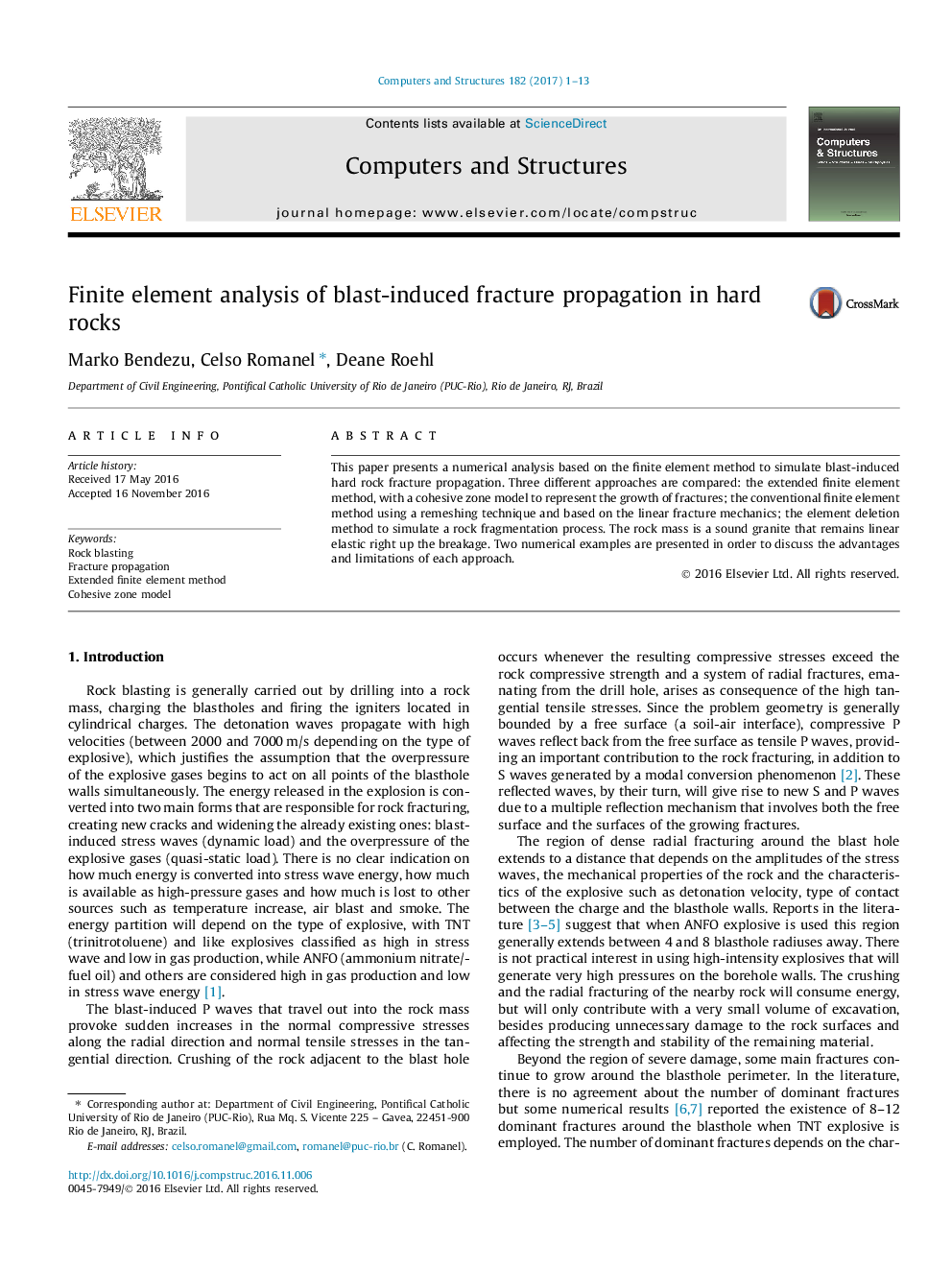| Article ID | Journal | Published Year | Pages | File Type |
|---|---|---|---|---|
| 4965736 | Computers & Structures | 2017 | 13 Pages |
Abstract
This paper presents a numerical analysis based on the finite element method to simulate blast-induced hard rock fracture propagation. Three different approaches are compared: the extended finite element method, with a cohesive zone model to represent the growth of fractures; the conventional finite element method using a remeshing technique and based on the linear fracture mechanics; the element deletion method to simulate a rock fragmentation process. The rock mass is a sound granite that remains linear elastic right up the breakage. Two numerical examples are presented in order to discuss the advantages and limitations of each approach.
Related Topics
Physical Sciences and Engineering
Computer Science
Computer Science Applications
Authors
Marko Bendezu, Celso Romanel, Deane Roehl,
